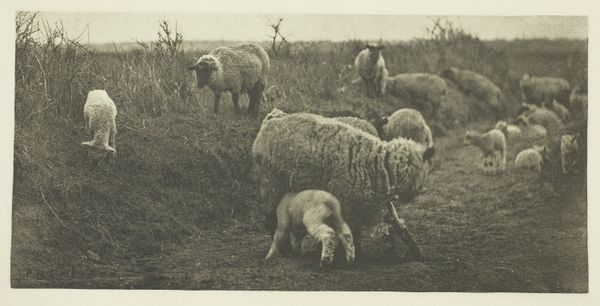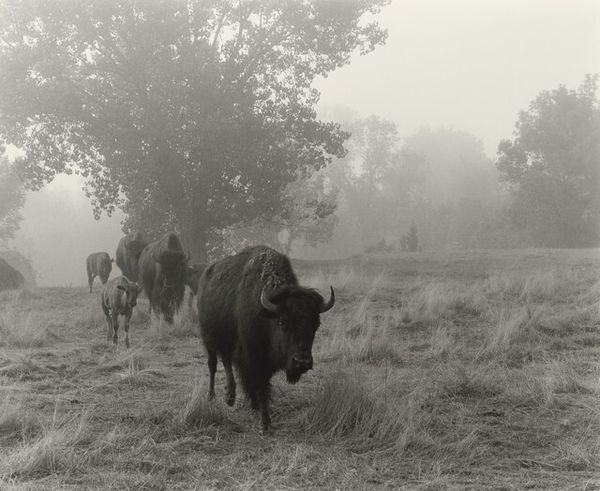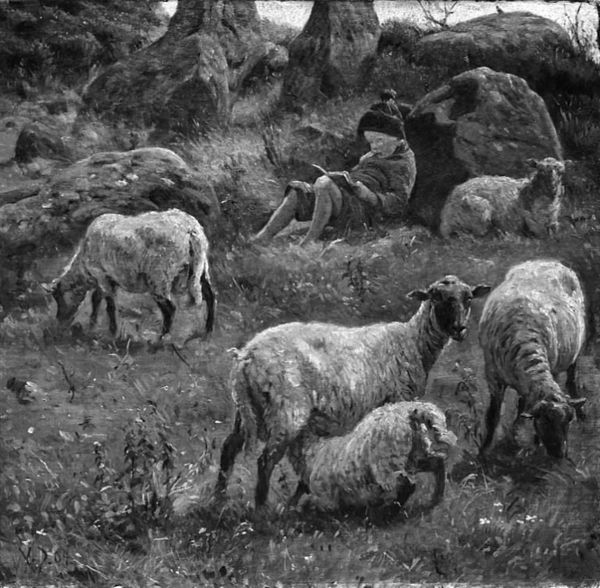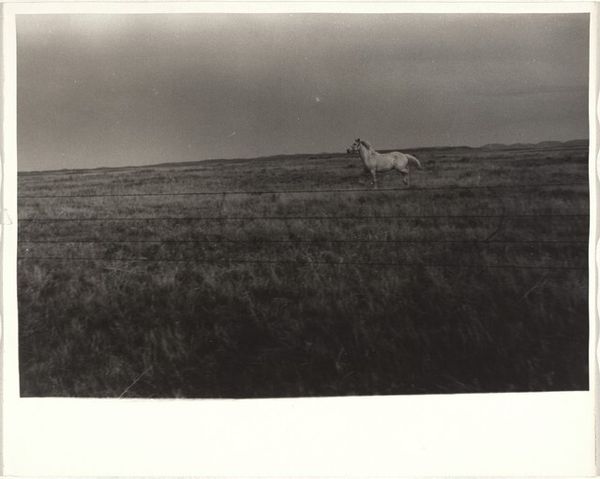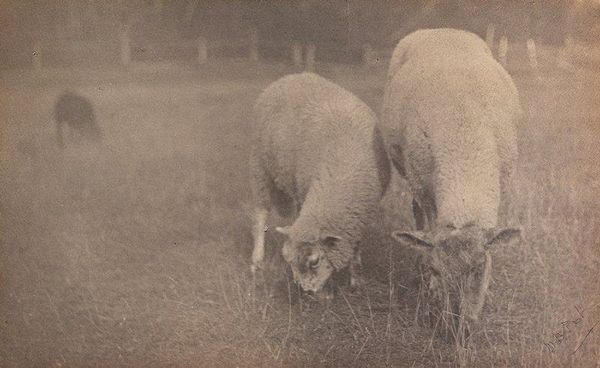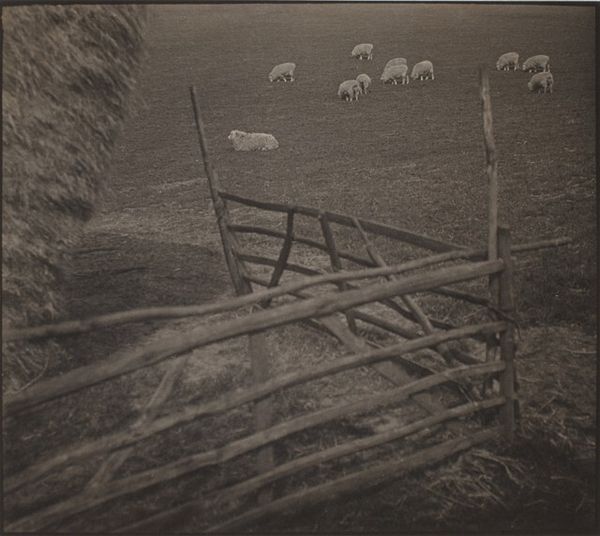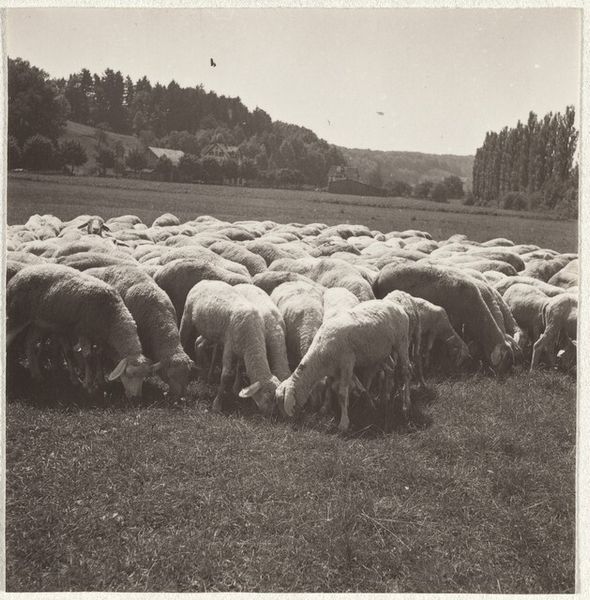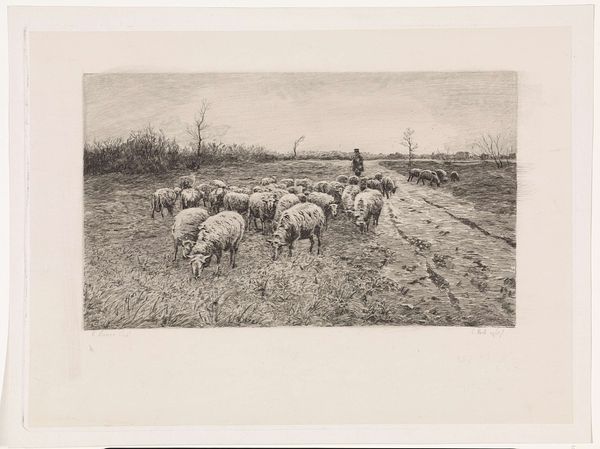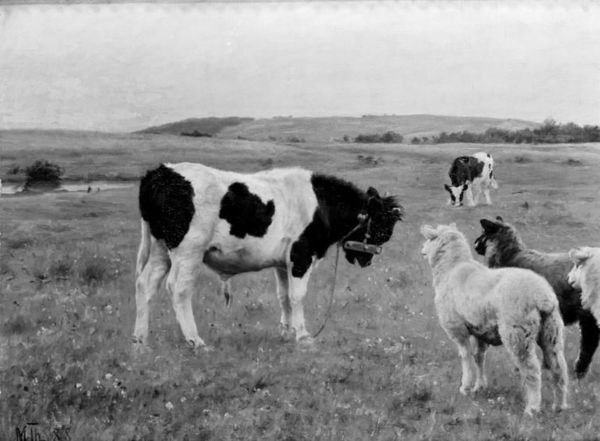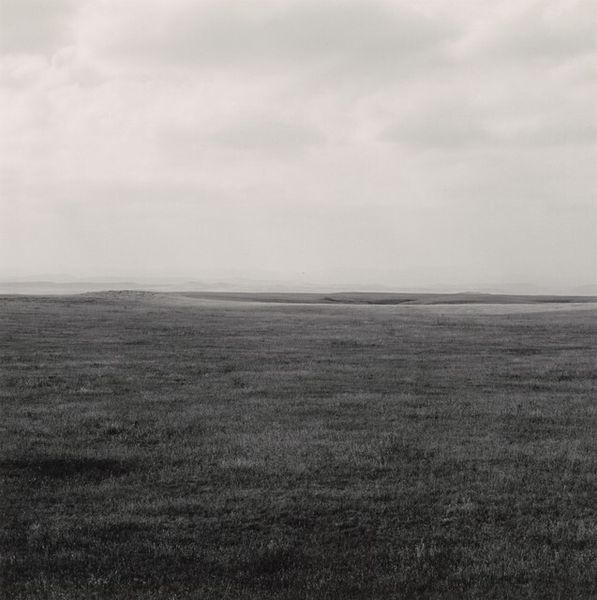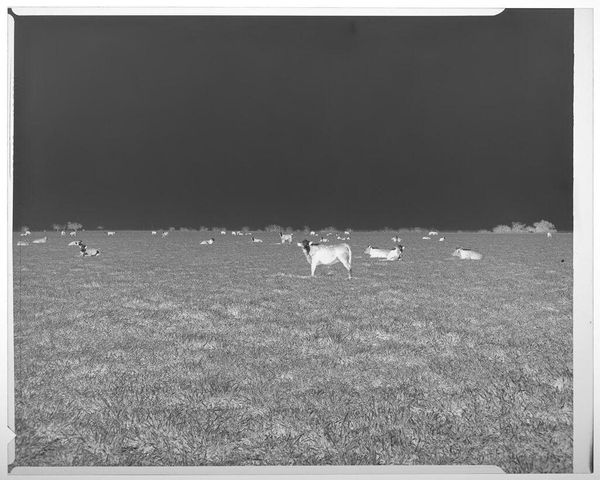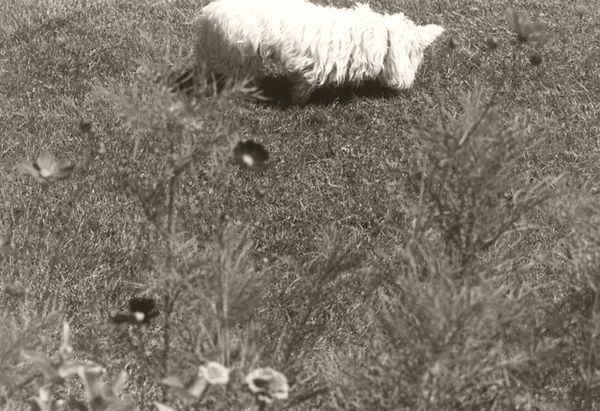
photography, gelatin-silver-print
still-life-photography
countryside
postmodernism
landscape
photography
black and white
gelatin-silver-print
monochrome photography
monochrome
realism
monochrome
Dimensions: image: 23.8 × 18.7 cm (9 3/8 × 7 3/8 in.) mount: 38.2 × 33.1 cm (15 1/16 × 13 1/16 in.)
Copyright: National Gallery of Art: CC0 1.0
Curator: Here we have an untitled gelatin-silver print by Douglas Prince, created in 1972. Editor: The initial impression is one of serene rurality, a black and white study in texture and form. The sheep in the foreground, grazing, immediately draws the eye. Curator: Exactly. Consider the time it was made. 1972 was a period rife with social unrest, yet Prince presents us with this tranquil pastoral scene. It serves as a poignant reminder of the enduring link between humanity and the natural world, perhaps an implicit comment on the search for simpler ways of living amidst global turmoil. Editor: The composition is key. See how the strong diagonal created by the grassy field leads to the copse of trees and the flock of sheep further back? The high contrast enhances the shapes and emphasizes a return to minimalist photography of that era. The grayscale reinforces the basic essence of the shapes within. Curator: It could be argued that the simplicity is deceptive. The seemingly straightforward scene becomes a comment on labor, class, and the cultural idealization of country life, as we observe a farm animal and reflect on rurality and the political ecology inherent to the location. Editor: A fascinating lens through which to understand Prince's intent, to question the cultural impact rather than to celebrate only its visual language. Still, consider how beautifully the differing textures – the rough wool of the sheep, the soft grass, the solid trees– work together. There is a clarity of form. Curator: The formalism is part of the story. That Prince deliberately chose a medium and subject matter so connected to older visual traditions challenges notions of progress. Perhaps he asks us what it means to return to what came before when so many social issues remain unsolved? Editor: I leave contemplating what formalism truly conceals. Curator: Or, reveals. Each reflection informs the other.
Comments
No comments
Be the first to comment and join the conversation on the ultimate creative platform.
